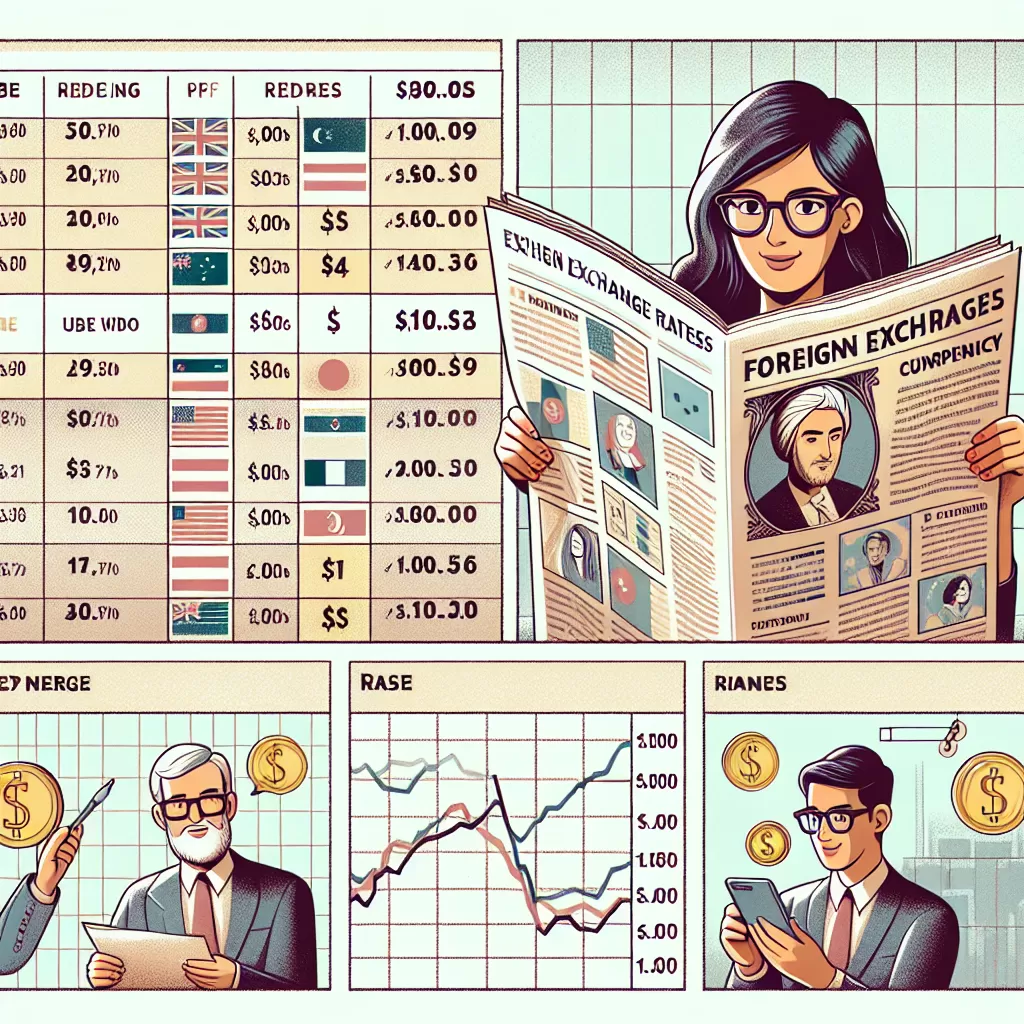How To Read Foreign Exchange Rates
Follow Currency Mart April 10, 2024
Where to purchase Foreign Currencies?

Understanding Foreign Exchange Rates
The foreign exchange market, a broader term for the realm of changing currencies from one type to another, is an intricate system where currency values fluctuate rapidly. Comprehending this system requires a basic understanding of some fundamental concepts, including exchange rates.What is a Foreign Exchange Rate?
A foreign exchange rate is the worth of a particular nation's currency in comparison to another nation's currency. It shows how much of Currency A you need to purchase a unit of Currency B. These rates vary due to economic aspects like inflation, interest rates, and geopolitical events that influence supply and demand dynamics.The Anatomy of Foreign Exchange Rates
There are two components in a foreign exchange rate: the base currency and the quote currency. The base currency is listed first and the quote second. For example, in USD/CAD=1.28, USD is the base, while CAD is the quote. This means that one US dollar equals 1.28 Canadian dollars.Spot Rates and Forward Rates
There are two main types of foreign exchange rates: spot rates and forward rates. A spot rate is a currency’s current value. On the other hand, a forward rate is a futures contract price for assets, negotiated today, delivered and paid in the future. It involves an agreement to exchange currencies at a future date at a specific price.Difference between Direct and Indirect Quotes
A direct quote is a currency exchange rate quoted in fixed units of a foreign currency against varying amounts of the domestic currency. On the contrary, an indirect quote is a currency exchange rate quoted in fixed units of the domestic currency against varying amounts of the foreign currency.Understanding Bid, Ask, and Spread
The 'bid' is the price at which a dealer is willing to purchase a currency, and the 'ask' is the price at which a dealer will sell the same currency. The variation between the bid and ask prices is called 'spread.' A narrower spread indicates a more liquid market, and wider spreads usually show more volatile markets.Reading Cross-Currency Exchange Rates
A cross currency is any pair in which neither currency is the U.S. dollar, simplifying the process of converting one currency directly into another without having to convert it into USD first. Cross rates are derived from the respective USD pairs but are quoted independently.Importance of Real-Time Exchange Rate Information
Forex market rates are always fluctuating. Consequently, it's essential to have real-time and accurate information on these rates when making any foreign exchange transactions. Delayed information could result in significant financial losses.Conclusion: Decoding Forex Rates
Understanding how to read forex exchange rates is a crucial skill in the world of forex trading and international commerce. It's also necessary when traveling overseas. Remember that the exchange rate is a reflection of a country's economic health in comparison to others. So, having a firm grasp of these rates allows you to make informed decisions about currency conversion, whether for business or pleasure.
Where to purchase Foreign Currencies?